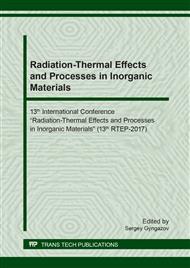p.155
p.159
p.165
p.170
p.176
p.185
p.190
p.195
p.200
On the Issue of an Ash Microsphere Application as a Framework Forming Filler in Composite Materials
Abstract:
Hollow aluminum and silica microsphere is a component of ash wastes from heat and power industry that today is widely used as a microaddition almost in all sectors of economy. It is used to improve properties of different materials and constructions or to produce advanced properties of these materials. Hollow aluminum and silica microsphere is non-reactive microaddition that determine its advantages in producing ecologically friendly materials and in providing materials with additional properties without changing the basic. In this paper research has been conducted on identifying the modulus of viscosity focused on the effect on the capacity to form structure links that are influence the properties of producing leak less framework. Modulus of viscosity is one of the main dynamic characteristics of fill finely divided materials that determine materials and constructions strength properties including the capability to form a rigid frame. The research was carried out to determine the correlation between the modulus of viscosity and the humidity of raw component in order to identify optimal conditions of material formation and producing an item with the highest level of durability and rigidity. Moreover, the paper revealed the connection between the modulus of viscosity and the size of non-reactive microaddition based on set humidity and the influence of the microaddition size on the trend in modulus of viscosity.
Info:
Periodical:
Pages:
176-181
Citation:
Online since:
September 2018
Keywords:
Price:
Сopyright:
© 2018 Trans Tech Publications Ltd. All Rights Reserved
Share:
Citation:


